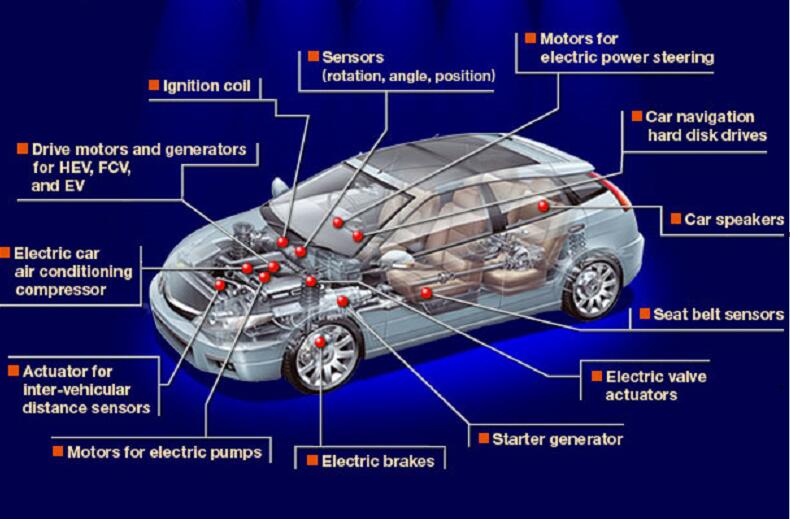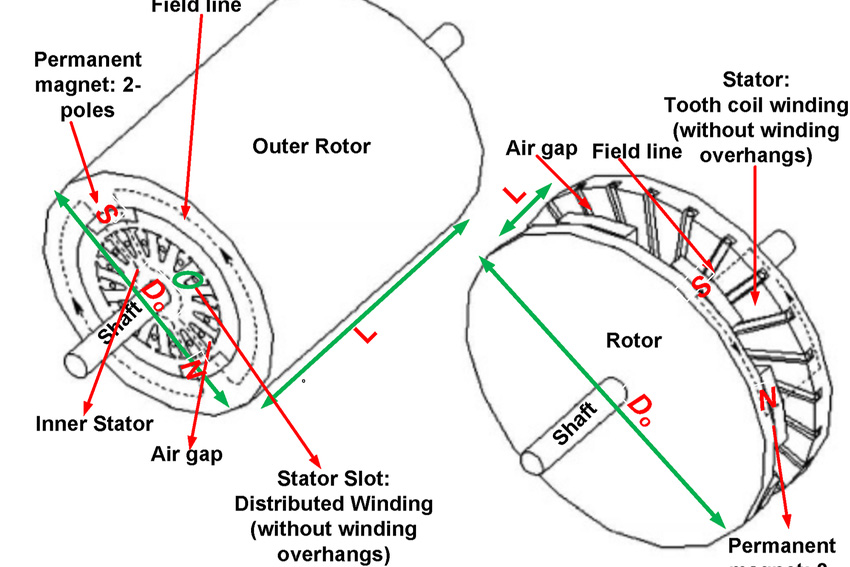Permanent Magnets in the Electric Power Steering System (EPS)
As an important part of the vehicle, the steering system is one of the key systems that affect the stability, comfort, and driving safety of the vehicle. In the design of the steering system, most commercial vehicles and 50% of saloon cars adopt a power steering system to alleviate the contradiction between the steering lightness and the steering sensitivity. Globally, the car Electronic Power Steering System (EPS) loading rate has exceeded 50%. The EPS system uses the power generated by an electric motor to assist the driver in steering. Permanent magnets are used in EPS motors. So in this article, we will take a look at the permanent magnets in the electric power steering system.
 Permanent Magnets in the Electric Power Steering System
Permanent Magnets in the Electric Power Steering System
Composition of the EPS System
According to the torque signal on the steering wheel and the driving speed signal of the car, the electronic power steering system (EPS) uses an electronic control device to make the motor generate auxiliary power of the corresponding size and direction to assist the driver in steering operations. Although the structural components of different vehicles are different, the composition of the EPS system is generally the same. It is generally composed of a torque (steering) sensor, electronic control unit, motor, reducer, mechanical steering gear, and battery power supply.
The motors used in EPS are divided into brushed motors and brushless motors:
1. Brushed Motors
The brushed motor switches the current while the brushes and commutator rotate, and can rotate when the power is turned on, and the cost is low. However, the windings of the brushed motor are arranged on the rotor side. As the output power increases, the moment of inertia of the motor increases, and it is necessary to solve the problem of the deterioration of the steering sensitivity.
2. Brushless Motors
The brushless motor itself does not have a rectifier function, so it needs a built-in angle sensor to switch the current corresponding to the angle signal through a circuit, so it has a complex structure and a high cost. However, the windings of the brushless motor are arranged on the stator side, and the rotor is a permanent magnet. Even if the output power increases, the inertia moment problem can be suppressed.
Permanent Magnets in the Electric Power Steering System
EPS system has very high requirements for the performance, weight, and volume of permanent magnet motors. Therefore, the permanent magnets in the EPS system are mainly high-performance neodymium magnets and currently are mainly sintered neodymium magnets. Common grades are 45H, 48H, 38SH, 40SH, 42SH, 48SH, 35UH, etc. In the future, hot-pressed NdFeB magnets are expected to replace sintered NdFeB magnets in the EPS system, but currently, the technology is not yet mature and the cost is still high. Therefore, sintered NdFeB magnets are still the mainstream.
Conclusion
Thank you for reading our article and we hope it can help you to know the permanent magnets in the electric power steering system better. If you want to know more about permanent magnets, we would like to advise you to visit Stanford Magnets for more information. Stanford Magnets is a leading magnet supplier across the world. It has been involved in R&D, manufacturing, and sales of permanent magnets since the 1990s and can provide customers with high-quality permanent magnets such as ferrite magnets, AlNiCo magnets, SmCo magnets, and neodymium magnets at a very competitive price.















